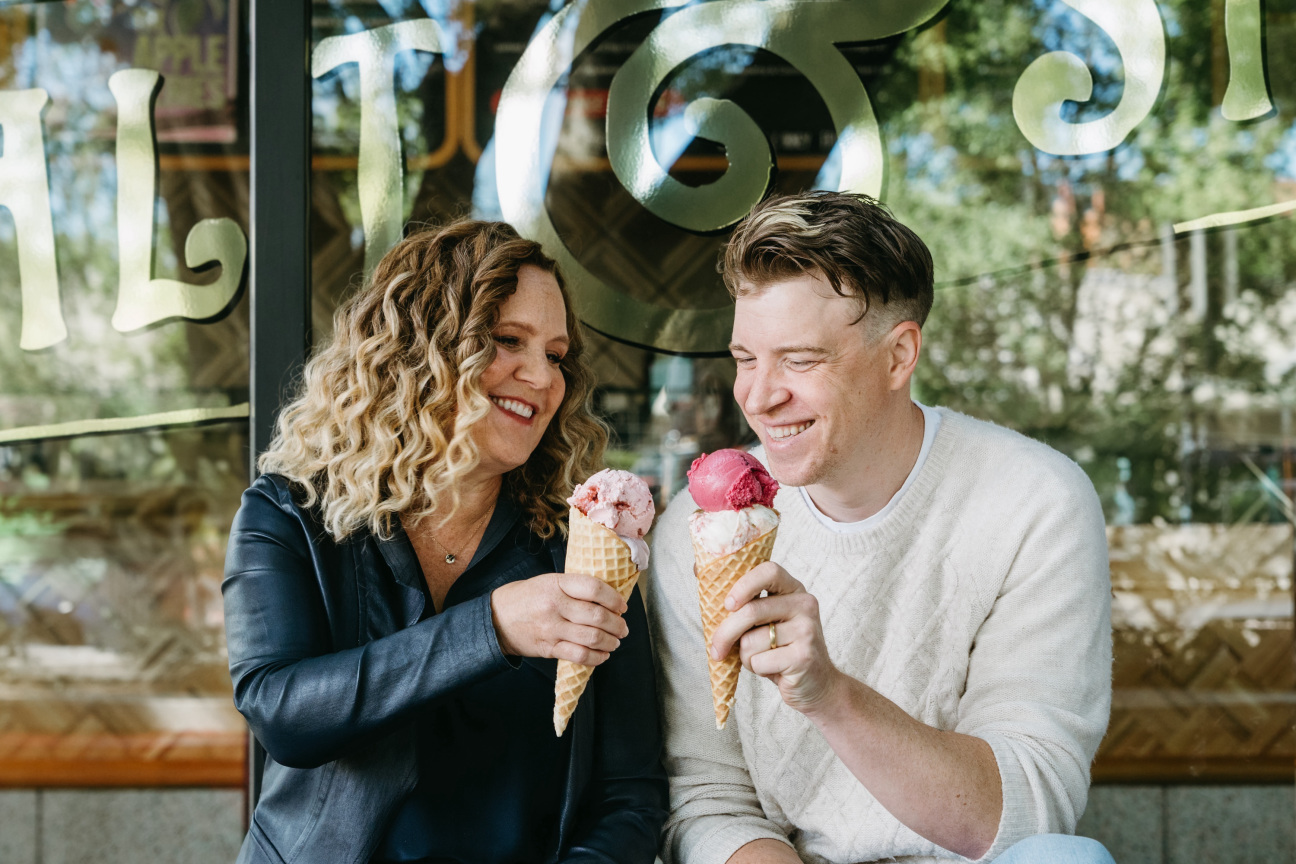
For Kim and Tyler Malek, making ice cream has never just been about the perfect scoop.
The Salt & Straw co-founders—and cousins—founded their business in Portland, Oregon, in 2011 with no prior experience around the dairy delicacy. Fast forward to 2024, and the pair helm over 40 locations, including a newly opened Upper West Side storefront and a West Village brick-and-mortar set to start welcoming their devoted fan base next month. These eagerly awaited East Coast shops were a long time coming: Since their first year in business, Kim remembers New Yorkers clamoring for a Salt & Straw of their own. Now that that reality has become manifest, I foresee locals happily lining up to try the slate of Gotham-inspired flavors (Chocolate Babka with Hazelnut Fudge, Pastrami on Rye, Pistachio and Ricotta Cannoli—to name a few) and stock-piling their freezers with pints for later.
What Kim and Tyler also hope these ice cream lovers come away with is an renewed appreciation for—or introduction to—a few of the city's culinary staples, from Breads Bakery and PopUp Bagels to Carnegie Deli and Brooklyn's Grimm Artisinal Ales. This appetite for regional idiosyncrasies is at the core of both the ethos and success of Salt & Straw. It's bolstered by twin commitments of another caliber: to the well-being of their employees (guaranteed medical and dental insurance, parental leave, and PTO, which are still all too rare in the service industry) and the communities out of which they operate their shops. Salt & Straw has worked with the likes of Portland's Urban Gleaners to bring light to local food insecurity, partnered with Alex's Lemonade Stand to support child cancer research, and collaborated with San Francisco's La Cocina, a nonprofit cultivating low-income food entrepreneurs. At the end of the day, for Tyler, it's about bringing customers in "and giving them literally free spoons of ice cream to talk over, like this little trojan horse for creating change."
To mark their East Coast landing, CULTURED caught up with the cousins to talk about scaling up sustainably, their love for (good) salt, and where they're eating during their NYC pit-stops.
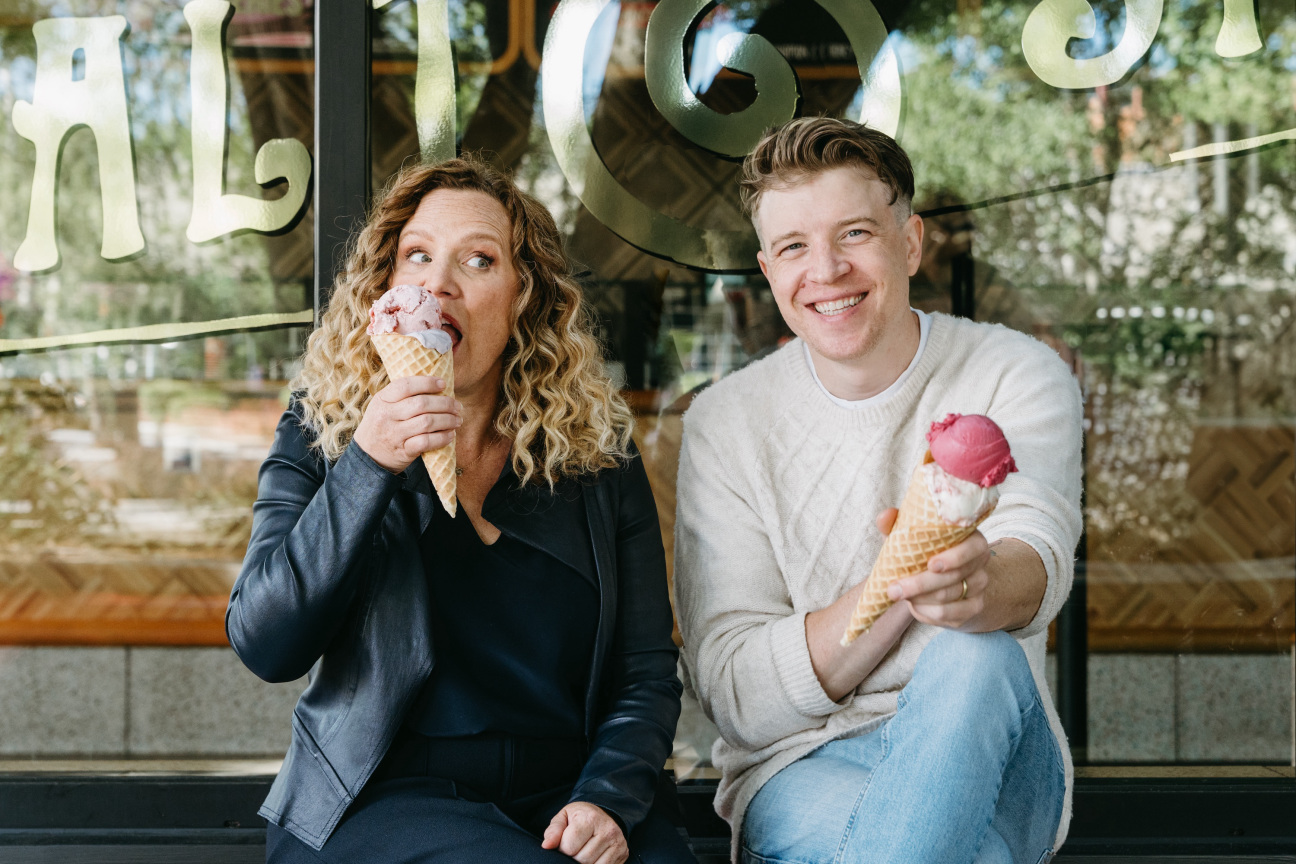
We’re sitting next to each other, so this is a funny question to ask. Where are you, and what's in your system?
Tyler Malek: We're here in the Upper West Side for the opening of our new shop. I brought my family here from Oregon, so we're living in chaos. We had to do a Shake Shack trip for them. That’s the dinner in my system, and then we went to Daily Provisions this morning.
Kim Malek: We all had this breakfast sandwich from Daily Provisions. I took a picture and sent it to my 14-year-old daughter. I need to stop talking about that breakfast sandwich, but it was amazing!
Any coffee? Any tea? Any drinks?
Tyler: Simple cappuccino with soy milk, bringing it back!
Kim: Whole milk for me.
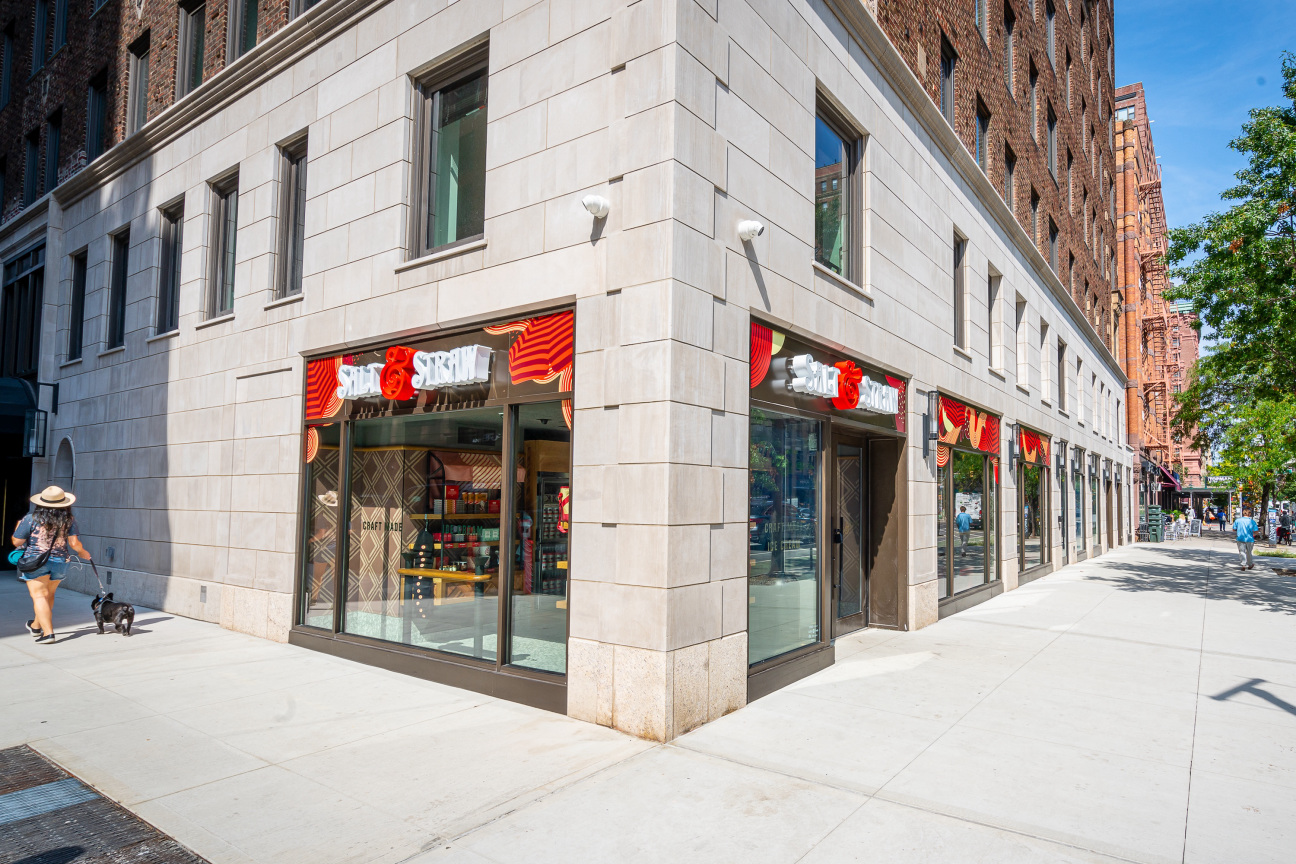
How does it feel to be opening Salt & Straw’s first East Coast location?
Kim: It's a combination of being thrilled and terrified. Opening in New York is not for the faint of heart, and opening anything in the food world is hard. And ice cream is all the harder. We’re crazy! But it's been a dream of ours since we started the company. When I first opened on Alberta Street, I can remember getting a phone call from this woman in New York. She had read about the ice cream, and she was like, “Where can I get it in New York?” I remember thinking, We just opened one shop in Portland! What are you asking us for? To be here 13 years later is crazy. I should have kept her number.
Tyler: Our MO since day one has always been using this ice cream as a canvas to talk about different food stories and partnerships. There's such dearth in the artisan food community, and so much respect for doing things the hard way. When you think about Portland and New York, there's that shared passion for food. These are our people. It just took us a while. To be perfectly honest, it's hard to be this far from home, and it took us 13 years to even be ready operationally—how to hire the right team members, how to train them, how to build a shop the right way.
But there's beauty in scaling up sustainably.
Tyler: Oh yeah! We've got 13 years worth of leaders that we've been building up to take over this shop.
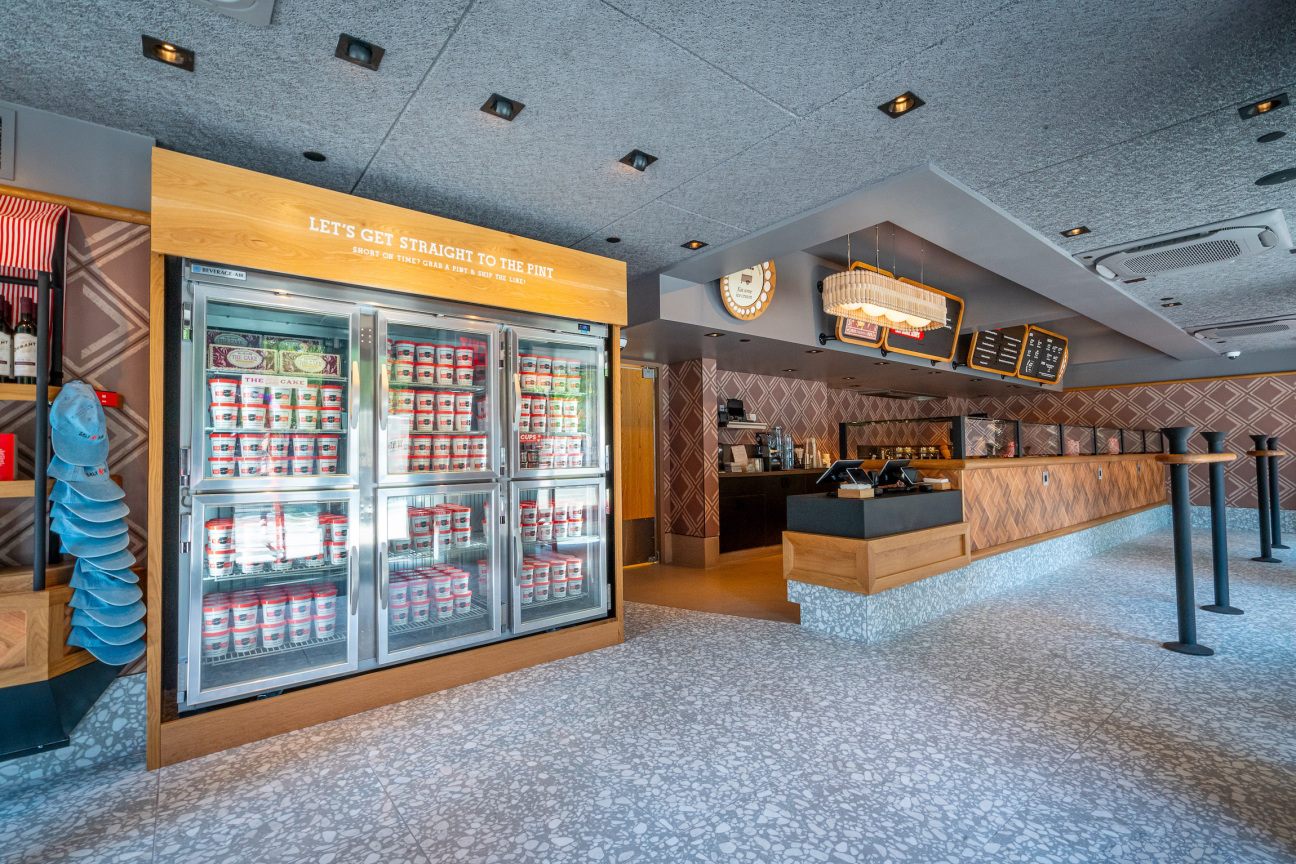
I would love for you to talk a little bit about the role of ice cream in New York culture versus West Coast and specifically Portland culture. What kind of research did you two do in terms of thinking about the history of ice cream or the legacy that you are stepping into?
Tyler: You know, the name Salt & Straw comes from when they used to hand-churn ice cream on salt and ice and then pack it on straw. That heritage literally comes back to New York and people peddling ice cream on ice blocks and carts. We’ve had a head start, too. We have our first cookbook, and now our second one is coming soon. Our editor, Francis Lamb, an iconic New York-based editor, has been schooling me on New York ice cream for eight years now. I remember I was like, “The most famous nut ice cream has got to be pralines and cream.” And he's like, “No, it’s pistachio!” We spent hours talking about why, in New York in particular, pistachio ice cream is so iconic.
That’s one micro conversation of thinking about the way food cultures have impacted the city in ways that you often don't see on the streets anymore. From there, though, it really does go back to our bread and butter: finding the best of the best and telling their stories through ice cream. When you come in, you'll spend half an hour or 45 minutes just talking to the server about, like, this really cool beer that's made in Brooklyn, and why it took three years to make this one barrel of brown ale sour. Or you'll talk to someone who is trying babka for the first time ever. We get to open their eyes and introduce them to Breads Bakery, which is arguably one of the best bakeries in the world. We want to use this space almost as a jumping off point for people to learn about the city around them.
Other than Breads, what community partners are you excited to work with?
Kim: The founder of Tacombi is a good friend of mine. Danny Meyer as well. This little pocket of folks here feels like home in a lot of ways. Since we started working at this location, I’ve been getting messages almost every day from different friends and family who are like, “I'm staying here. I live around the corner.”
Tyler: It's been fun. We’ve been doing really cool partnerships with PopUp bagels and Grimm Ales. Probably the most aspirational flavor we’ve made is pastrami on rye. We worked with Carnegie Deli to use their pastrami. It's been interesting figuring out how to build a menu that tells a story. It's somewhat of a caricature of the food industry, but also done in a really curated way. It's been almost a year in the making.
If you look back over the past 13 years, what do you attribute your success and your cult following to? Do you think you’ve resurfaced something that's been lost in food culture?
Kim: Over this period of time in the United States, people have been experiencing high levels of depression and stress and isolation. One thing we’ve found about Salt & Straw is that our guests feel a sense of connection when they come in. That’s because of our team who really takes a lot of time to connect one-on-one with customers. It's also through the partnerships that we do in our flavors and connecting with that community and with each other. We've had marriage proposals and job offers and people putting their phones down and talking to each other like, “Oh my gosh, this flavor just came out! Have you tried it?” They meet each other in line, and they get that sense of connection that I think people are really yearning for. It's based on this idea of nostalgia being reimagined in this modern way.
Tyler: People come in for very different reasons than a standard ice cream shop. This is not a “come get your scoop and run away” place, although you could do that, and that's fine. In most cases, you see people coming up and talking. This idea of intense hospitality for one scoop of ice cream is so counterintuitive for a lot of people that it actually completely blows their minds and has this ability to completely change people's days.
I know Salt & Straw also prides itself on its healthy work environment. You offer great benefits to the people who work here. You're also very well known for being socially involved in terms of different food justice and social justice initiatives. You’ve partnered with the Trevor Project, Urban Gleaners, and so many other incredible organizations over the years. I'm wondering how you make sure that social involvement is a central focus of the company, and not just a box to check off.
Kim: It's built into the fabric of how we do business. It’s really important to realize that that's actually more sustainable. You're not just giving back every once in a while—it's built into how you hire people, who you partner with, when you do collaborations. We're buying products from them and supporting their business versus just giving a one-time donation. When I showed up today, I met a lot of our New York team for the first time, and the first thing out of their mouths was, “I feel like I’m finally working for a company that cares about me as a person.” And the second thing I want to hear, and I did, is, “I feel really seen for who I am.” We think the idea that you leave yourself at the door when you come to work is bullshit. You bring your full self to work, and we celebrate that!
Tyler: We get to provoke conversation around flavors and experiences and life stories of really amazing people, and of really hard-to-understand social causes in a very safe environment. In Washington County, where I live in Oregon, 35 percent of children are considered malnourished. That's really, really scary. If you're eating ice cream, you can talk about it and how you can actually change it by reducing food waste and finding ways to use the resources that are in our community. Or we get to work with, for example, a bug farmer in San Francisco. She's first generation from Mexico City and started one of the first bug farming companies in the country. We’re able to have people taste edible crickets in ice cream and use that as a vehicle to talk about someone's life experience, or someone's really amazing small business. But we’re doing it in a way that's not pushing anyone away. It's bringing them in and giving them literally free spoons of ice cream to talk over, like this little trojan horse for creating change.
Are there any New York spots you want to shout out?
Tyler: I love the Musket Room! I met the pastry chef there and we nerded out for a while about how they plan their menu. I also got to go to Attaboy for the first time a couple months ago. It had been on my list for so long. When we went through the hospitality training of Union Square Hospitality Group, I got to go to Gramercy Tavern, and they did the full hospitality tour and let us go behind the scenes. We got to tour the kitchen. To this day, that’s one of my favorite experiences.
Turning to a few rapid fire questions for you. Breakfast, lunch, or dinner, and why?
Tyler: I'm a huge breakfast advocate. What's the saying? Breakfast like a king, lunch like a prince, dinner like a pauper.
Kim: Lunch. I have three little kids, so morning is a marathon getting them out the door. Lunch is for me.

What are the most underrated ingredient right now?
Tyler: Underrated is the salt you use. We have one of the most famous selmeliers in the world in Portland. His name's Mark Bitterman. He wrote the book Salted. Literally every salt you use can have a drastic impact on the texture and the flavor of food. We wrote a whole chapter on salted caramel for our book. We did a deep, deep dive.
What about overrated?
Tyler: I think very, very highly of most foods!
Kim: This is really sad, but we’re living in an overdone macaroni and cheese world.
And what’s the scoop of ice cream that's on the menu right now that feels like it represents where you're at in your life?
Kim: It’s gotta be one of the New York flavors! I'm gonna go with the chocolate babka. Because it's not only fantastic, but because of meeting with the Breads Bakery team and being welcomed to the city the way that we were.
Tyler: I know I should go with one of the new flavor, but I'm gonna stick with our olive oil ice cream. This is an Oregon-grown olive oil, which is really unique in and of itself. I'm in love with ice cream science, as you can tell. But this, technically, should be impossible. The way this ice cream is made, the way they build the fat profile, is epic. It's the perfect ice cream for pie à la modes. It's fig season right now. We've got three fig trees and apple trees, so we're making apple pie and fig jams and fig crumbles—with this ice cream on everything.

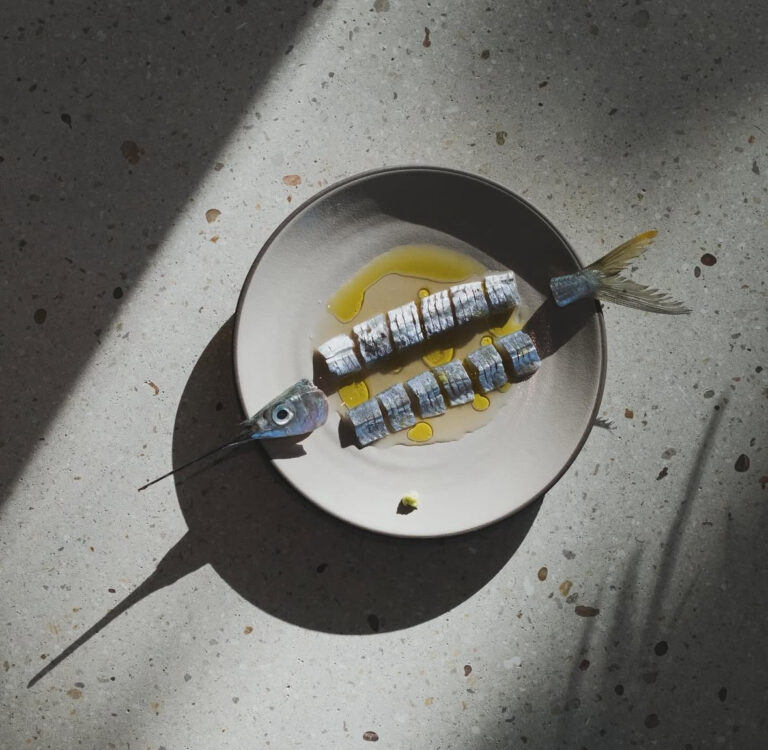

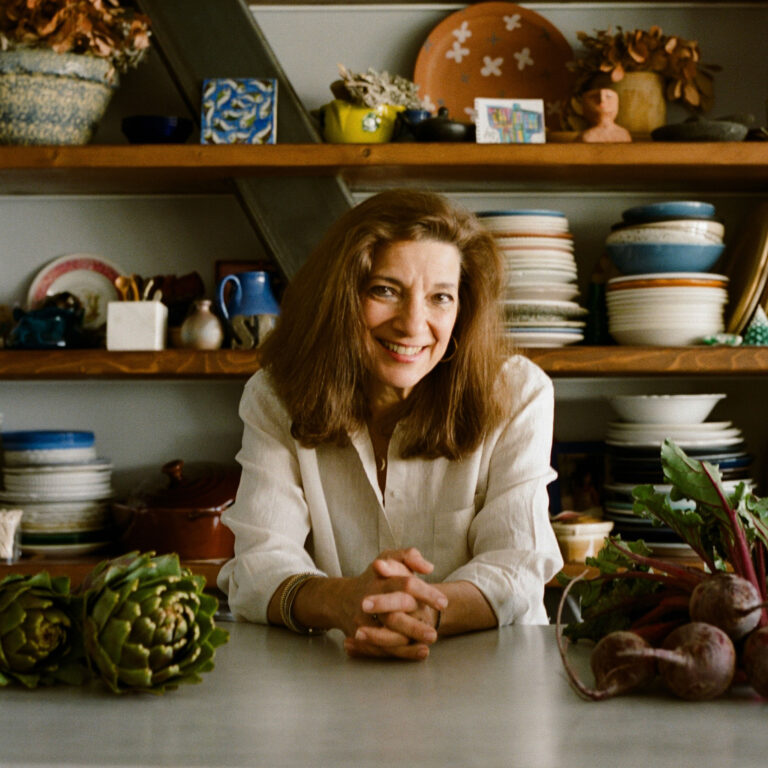
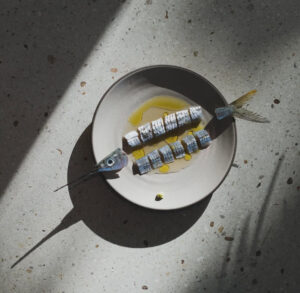
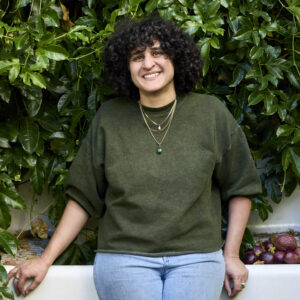




 in your life?
in your life?

